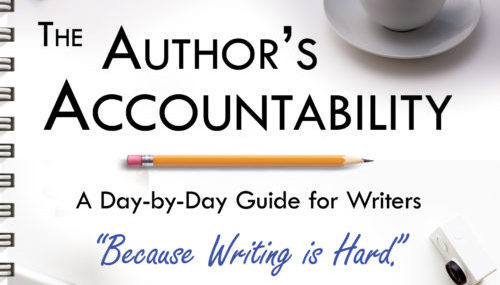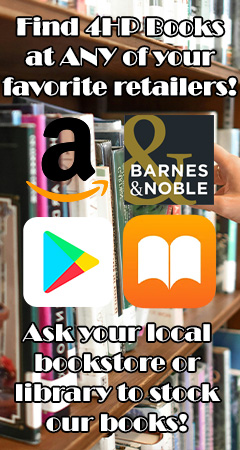
Ah, a great mystery in the industry that will blow your mind by the time we finish having a chat about this. Coming from a background in typesetting (book formatting) there’s so much that can be told about a book via its word count and the patterns we see across genres, readers, platforms, and more. Have you seen The Author’s Accountability Planner we release here at 4 Horsemen Publications every year? In this wonderful planner we have front matter to help you set goals and it includes this amazing snapshot:
Genre and Reader Impact
At a glance, it’s amazing to see where these numbers fall when you look at the right column in the image above. Depending on the reader you are writing to can decide how low or high you can go with your word count. Please note it’s not uncommon for Epic Fantasy and Epic Science Fiction to push close to the 200,000 word count range! Mixing and matching genre types can make the word count grow beyond the initial genre’s limits. Interestingly enough, looking at word counts on best selling books or staples for your genre and readership can be eye opening.
- TRUE: Books selling organically are often over the 80,000 word count range. This is seen within our own numbers in-house as well as industry.
- FALSE: younger readers read lower word counts.
- Upper middle grade (5th to 8th Graders) ranges: 45,000 to 100,000 words.
- Percy Jackson: The Lightning Thief by Rick Riordan is often read by 5th graders and has 87,223 words approx.
- Harry Potter and the Sorcerer’s Stone starts at 76,944 words but as the series evolved they sky rocket to over 100,000 to 200,000 words! Peaking at Order of the Phoenix with 257,045 words.
- TRUE: Best selling works often peak well over the 100,000 word count range.
- FALSE: The modern reader doesn’t have time to read so shorter works are best.
- With audiobooks and eBooks readers are having an easier time finding books at lower prices as well as reading longer works in piecemeal.
- Short stories sell better in collections over the 50,000 word range.
- TRUE: First chapters shouldn’t be super long. Many best selling novels have shorter, more concise first three chapters with word counts falling between 1200 to 2500 words.
- FALSE: Chapter word count doesn’t impact readers.
- It depends on the reader. When writing webnovels and similar serializations you want to fall close to 1200-1700 words consistently every time.
- Some even push as high as a 2500 word count depending on genre.
- TRUE: Readers are ok with series word counts getting higher. Oftentimes we see novels go higher and lower. As long as the books don’t fall too much lower than the initial work, readers tend to not notice and feel longer works as a type of reward.
- FALSE: You can put a short story or novella within a novel series.
- Readers will riot. These are best left as spin-offs independent from the core series.
- You can often make a sub-series of short stories and novellas to keep them together.
- Readers do enjoy spinoffs and shorter works from their favorite series, but if it’s implied as the next book in the main series that’s been novel length until this point, it will make them feel as if the author didn’t put their best foot forward.
Best Selling Novels
- Don Quixote by Miguel de Cervantes 345,390 words
- A Tale of Two Cities by Charles Dickens 146,500 words. Originally released in monthly installments of 18,500 words
- The Lord of the Rings by J.R.R. Tolkien 455,125 words
- The Lion, The Witch and the Wardrobe by C.S. Lewis 38,421 words
- The Da Vinci Code by Dan Brown 170,000 words
- The Alchemist by Paulo Coelho 45,000 words
- Anne of Green Gables by Lucy Maud Montgomery 39,500 words
- War and Peace by Leo Tolstoy 561,304
- Pride and Prejudice by Jane Austen 120,697
- Watership Down by Richard Adams 156,154
- The Time Traveler’s Wife by Audrey Niffenegger 155,717
- Pet Sematary by Stephen King 142,664
- Twilight by Stephanie Meyer 118,875
- Throne of Glass by Sarah J. Maas 113,665
- Divergent by Veronica Roth 105,143
- Gone Girl by Gillian Flynn 145,719
- The Hunger Games by Suzanne Collins 99,750
- Discover more here: https://brokebybooks.com/the-word-count-of-175-favorite-novels/
Publishing Snapshot
From seeing a word count, a professional in the publishing industry can speculate and predict a lot about a book’s end product. Granted, it’s not 100% accurate but it can be startling to see in action. The first thing we do is make sure the word count meets the genre and reader needs. From there, we start thinking in terms of the final product. Here’s some fun facts:
- The average 5.25 x 8 to 6 x 9 book page holds roughly 300-600 words depending on the design and font choices.
- Most 80,000 word novels land between 250-300 pages.
- Every 10,000 words often translates into 1 finished hour of audiobook. For example, an 80,000 word novel will often be an 8-9 hour audiobook.
- Digital typesetting a 100,000 word novel for print and eBook with no images when utilizing InDesign can take anywhere between 2-6 hours.
Wait! Formula Writing!
Even then, many authors have found developing a formula for writing based on word counts can aid in productivity. This ranges from writing sprints, to chapter goals, or simply being aware of the final word count target can keep the mojo flowing. Keep in mind that these just some numbers to be aware of when writing that may help you manage writing as a whole:
- A 20-minute sprint will produce 200-350 words on average.
- Speech to Text apps like Otter can convert 1 hour of talking into 2,000-4,000 words.
- The average web novel chapter is 1200-2500 words.
- Revisions on a non-edited 80,000 word first draft can add 10,000 to 30,000 words on average.
- The average novel contains 25 to 50 chapters. Each can range from 1000 to 10,000 words.









